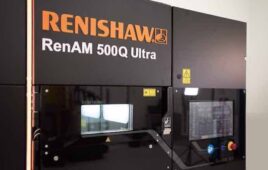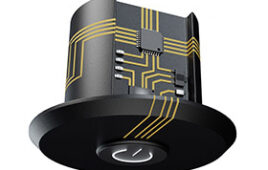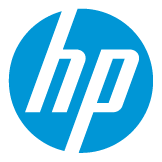Simon Fried, Co-founder and Chief Business Officer, Nano Dimension
One of the most promising new opportunities for 3D printing lies at the intersection of electronics and additive manufacturing. This convergence holds staggering potential for the electronics industry—particularly around rapid prototyping of professional printed circuit boards (PCBs) and also in antennas and MIDs (Molded Interconnect Devices).
PCBs are critical elements in today’s electronics. Specialized 3D printers using conductive and dielectric inks offer engineers and manufacturers flexibility for printing PCBs in-house for rapid prototyping, R&D or custom manufacturing projects. This gives designers more freedom for creativity and experimentation with their designs than they would have through traditional methods, and manufacturers gain faster iterations of boards. They also gain speedier times to market with new products and reduce risk around intellectual property because designs remain in house during prototyping.
There are a variety of benefits to 3D printing PCBs and other electric circuits. The ability to rapidly prototype in-house completely transforms the ways product development teams work. No more waiting days or weeks for a custom PCB prototype that has to be fabricated offsite—multilayer PCBs with throughholes and vias can be printed overnight. Designers also have the flexibility to print an entire board or just part of a circuit. For example, one could develop the RF and digital sections of the board in parallel, test, and iterate on the fly. The ability to 3D print PCBs is also very cost-effective—no outsourcing means lower production costs and faster time to market.
3D printing PCBs empowers progress and encourages innovation, lessening development risks and enabling faster times-to-market—and ultimately, better electronic products. It’s easy to envision this technology evolving to 3D print fully functional electronic devices and even putting a factory in a box.
Rush LaSelle, Director of Automation, Jabil Inc.
As we all know, additive manufacturing, or 3D printing, is empowering the next manufacturing revolution. Additive manufacturing is fueling the realization that manufacturing will soon transform production tools, supply chains, assembly lines, and product delivery. 3D printing is being utilized to create tooling and fixtures for new product introduction processes to help provide products faster.
Tooling and fixtures are an important foundation of manufacturing. They are used to secure, position, and support parts to ensure quality, conformity, precision, and safety. Almost all products are assembled using tooling and fixtures, which have been traditionally, produced using molds, castings, injection molds, and CNC machines. Some of the advantages to using 3D printed tooling, jigs, and fixtures:
- Instantly fabricating your part.
- Giving engineers the ability to refine and make numerous updates to designs and existing tools tout de suite, which enables faster time to market.
- Shortening lead time, allowing for faster production, high flexibility, high complexity, and faster adaptability.
- Reducing cost compared to other manufacturing methods.
- Creating little to no waste as precise tools within hours.
- Eliminating the need for additional process to create the part versus traditional methods (i.e., cutting tools or cleaning excess material and equipment after machine process).
- Creating complex geometries not possible in traditional methods (i.e., interlocking parts).
- Enabling more optimal and homogenous parts, leading to higher quality and better reliability.
Companies are starting to see how they can rely on this technology, which allows them to help customers bring their innovations to market faster and smarter.
Filed Under: 3D printing • additive • stereolithography, Industrial automation




